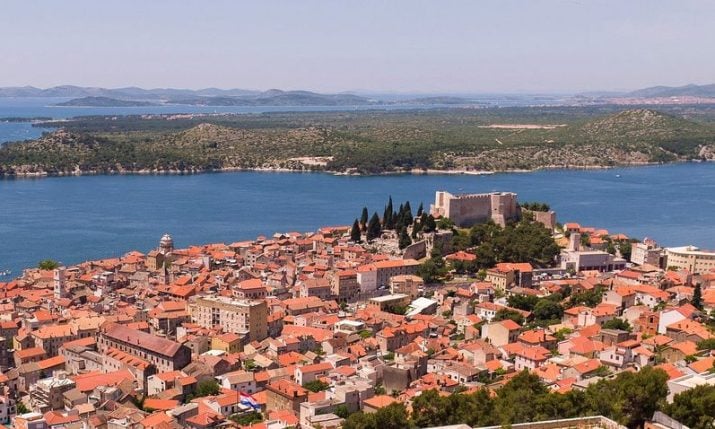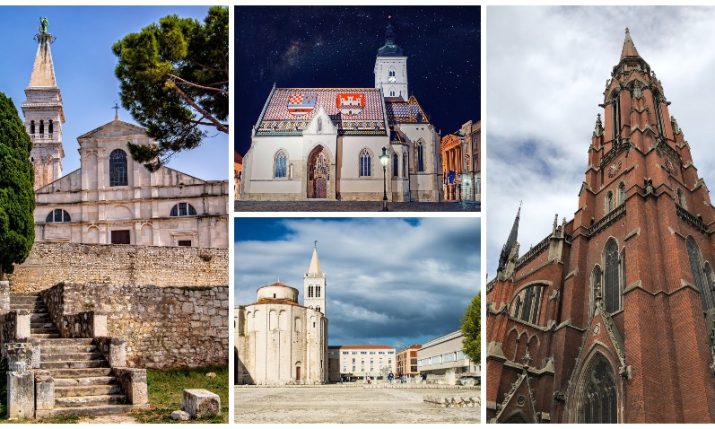Croatian city of Šibenik celebrates 957 years
- by croatiaweek
- in News
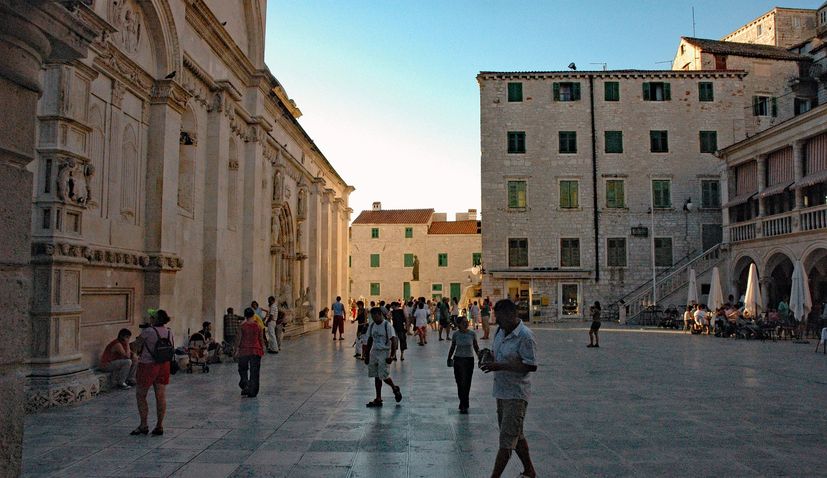
Šibenik
The first mention of the Croatian coastal city of Šibenik dates back to December 25, 1066, in the charter of King Peter Krešimir IV, and yesterday marked its 957th birthday.
It all began at the fortress of St. Michael on Christmas in 1066 when Šibenik was founded through the charter of King Peter Krešimir IV, earning it the nickname “Krešimir’s town.” Šibenik, in its 957 years, has been unique and pioneering in many aspects, Šibenik In writes.
It was the first city in the world to have public electric lighting in 1895, and the hydroelectric power plant at the Krka waterfalls started operating in the same year, making it the first in Europe, just two days after the first in the world at Niagara Falls, a fact that remains impressive even today.
During the rule of the Venetians in Dalmatia in the 15th century, Šibenik was the first city to mint its own currency, known as the Šibenik bagatin.
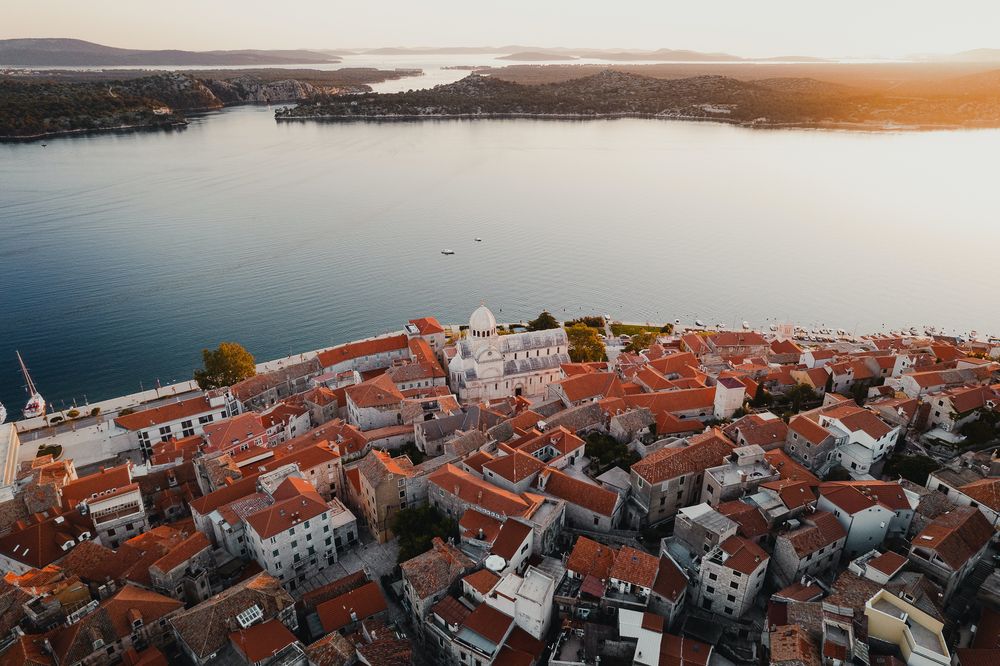
Šibenik
Although Šibenik is first mentioned in the 11th century, traces of settlement can be observed from prehistoric times. The broader area of the city was inhabited in the Neolithic period, as evidenced by rich archaeological findings from the Danilo site, the eponymous location of the Danilo culture.
In the Iron Age, the city’s area was inhabited by the Illyrian tribe of Liburnians. Given that the Šibenik harbor is one of the most naturally protected harbors in the eastern Adriatic, accessible only through the narrow St. Anthony Channel, it has always been a logical assumption that the Liburnians, skilled seafarers, must have had some form of control over it.
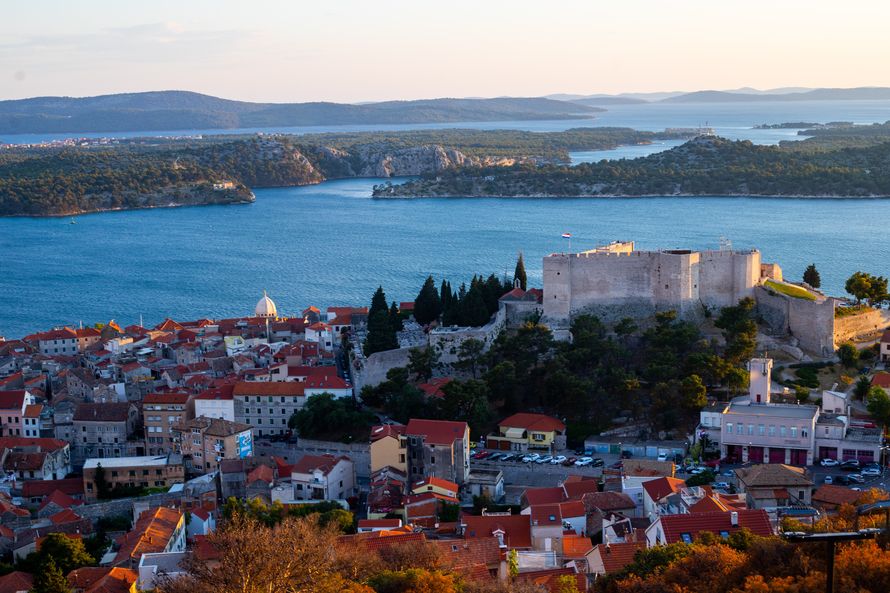
St. Michael’s Fortress
The importance of controlling the Šibenik harbor was even greater due to its location at the mouth of the Krka River, allowing further navigation towards Skradin, one of the major Liburnian centers. Evidence for this assumption includes material remains of the Liburnian culture (mostly pottery fragments) found during the excavation of the St. Michael’s Fortress, built above the city, evidently on the site of the former Liburnian fortress.
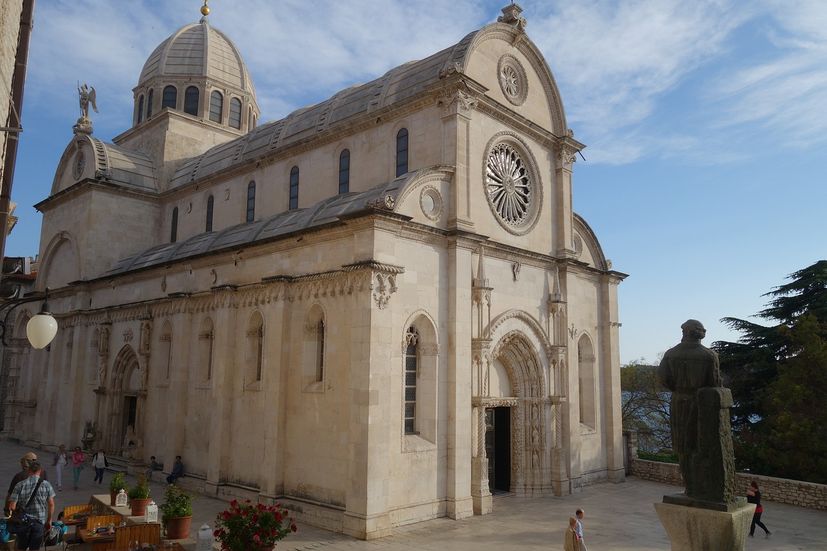
St James Cathedral
With Croatia entering into a personal union with Hungary in 1102, the Hungarian-Croatian kings became the sovereigns of Šibenik. In 1116, the Venetians conquered Šibenik and held it until 1124. In 1167, through a peace agreement between Croatia-Hungary and Byzantium, Šibenik came under Byzantine rule until 1180. After that, Šibenik was reintegrated into the Hungarian-Croatian state.

